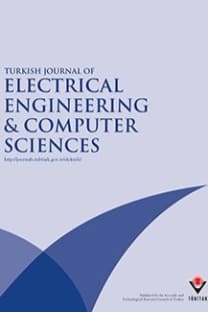Implementation of an AC model for transmission expansion planning considering reliability constraints
Transmission expansion planning, reliability, hybrid heuristic algorithm, nonconvex optimization, fuzzy decision making
Implementation of an AC model for transmission expansion planning considering reliability constraints
Transmission expansion planning, reliability, hybrid heuristic algorithm, nonconvex optimization, fuzzy decision making,
___
- L.L. Garver, “Transmission network estimation using linear programming”, IEEE Transactions on Power Apparatus and Systems, Vol. PAS-89, pp. 1688–1697, 1970.
- G. Latorre, R.D. Cruz, J.M. Areiza, A. Villegas, “Classification of publication and models on transmission expansion planning”, IEEE Transactions on Power Systems, Vol. 18, pp. 938–946, 2003.
- M.J. Rider, A.V. Garc´ıa, R. Rom´ero, “Power system transmission network expansion planning using AC model”, IET Generation, Transmission & Distribution, Vol. 1, pp. 731–742, 2007.
- M. Rahmani, M. Rashidinejad, R. Rom´ero, “Efficient method for AC transmission network expansion planning”, Electric Power Systems Research, Vol. 80, pp. 1056–1064, 2010.
- R. Rom´ero, A. Monticelli, A. Garc´ıa, S. Haffner, “Test systems and mathematical models for transmission network expansion planning”, IEE Proceedings - Generation, Transmission and Distribution, Vol. 149, pp. 27–36, 2002.
- R. Rom´ero, A. Monticelli, “A hierarchical decomposition approach for transmission network expansion planning”, IEEE Transactions on Power Systems, Vol. 9, pp. 373–380, 1994.
- R.A. Gallego, A.B. Alves, A. Monticelli, R. Rom´ero, “Parallel simulated annealing applied to long term transmission network expansion planning”, IEEE Transactions on Power Systems, Vol. 12, pp. 181–188, 1997.
- R.A. Gallego, A. Monteicelli, R. Rom´ero, “Transmission system expansion planning by an extended genetic algorithm”, IEE Proceedings - Generation, Transmission and Distribution, Vol. 145, pp. 329–335, 1998.
- E.L Da Silva, J.M.A. Orteiz, G.C. De Oliveira, S. Binato, “Transmission network expansion planning under a Tabu search approach”, IEEE Transactions on Power Systems, Vol. 16, pp. 62–68, 2001.
- S. Binato, G.C. De Oliveira, J.L. De Araujo, “A greedy randomized adaptive search procedure for transmission expansion planning”, IEEE Transactions on Power Systems, Vol. 16, pp. 247–253, 2001.
- A. Seifu, S. Salon, G. List, “Optimization of transmission line planning including security constraints”, IEEE Transactions on Power Systems, Vol. 81, pp. 123–128, 1989.
- I. De. J. Silva, M.J. Rider, R. Rom´ero, A.V. Garc´ıa, C.A. Murari, “Transmission network expansion planning with security constraints”, IEE Proceedings - Generation, Transmission and Distribution, Vol. 152, pp. 828–836, 2005. A.S. Sousa, N.E. Asada, “Combined heuristic with fuzzy system to transmission system expansion planning”, Electric Power System Research, Vol. 1, pp. 45–51, 2010.
- G.L. Torres, V.H. Quintana, “An interior-point method for non-linear optimal power flow using voltage rectangular coordinates”, IEEE Transactions on Power Systems, Vol. 13, pp. 1211–1218, 1998.
- G.D. Irisarri, X. Wang, J. Tong, S. Mokhtari, “Maximum load ability of power systems using interior point method nonlinear optimization”, IEEE Transactions on Power Systems, Vol. 12, pp. 162–172, 1997.
- X. Wang, G.C. Ejebe, J. Tong, J.G. Waight, “Preventive/corrective control for voltage stability using direct interior point method”, IEEE Transactions on Power Systems, Vol. 13, pp. 878–883, 1998.
- K. Shanti, S. Warup, G. Sudhakar, “Neural network approach to contingency screening and ranking in power systems”, Neurocomputing, Vol. 70, pp. 105–118, 2006.
- X. Yan, V.H. Quintana, “An efficient predictor corrector interior point algorithm for security-constrained economic dispatch”, IEEE Transactions on Power Systems, Vol. 12, pp. 803–810, 1997.
- R. Rom´ero, C. Rocha, M. Mantovani, J. Mantovani, “Analysis of heuristic algorithms for the transportation model in static and multistage planning in network expansion systems”, IEE Proceedings - Generation, Transmission and Distribution, Vol. 150, pp. 521–526, 2003.
- ISSN: 1300-0632
- Yayın Aralığı: Yılda 6 Sayı
- Yayıncı: TÜBİTAK
Actor-critic-based ink drop spread as an intelligent controller
Hesam SAGHA, İman Esmaili Paeen AFRAKOTI, Saeed BAGHERISHOURAKI
Wavelet multiscale analysis of a power system load variance
Samir AVDAKOVIC, Amir NUHANOVIC, Mirza KUSLJUGIC
A computer-aided diagnosis system for breast cancer detection by using a curvelet transform
Farah Hani NORDIN, Farrukh Hafiz NAGI, Aidil Azwin Zainul ABIDIN
An automated prognosis system for estrogen hormone status assessment in breast cancer tissue samples
Fatih SARIKOÇ, Adem KALINLI, Hülya AKGÜN, Figen ÖZTÜRK
Capability-based task allocation in emergency-response environments: a coalition-formation approach
Afsaneh FATEMI, Kamran ZAMANIFAR, Naser NEMATBAKHSH
Amin MAHMOUDABADI, Masoud RASHIDINEJAD
Biogeography-based optimization for voltage stability improvement and reactive reserve management
Subramanian ANNAMALAI, Ravi GOVINTHASAMY
Complexity reduction of RBF multiuser detector for DS-CDMA using a genetic algorithm
